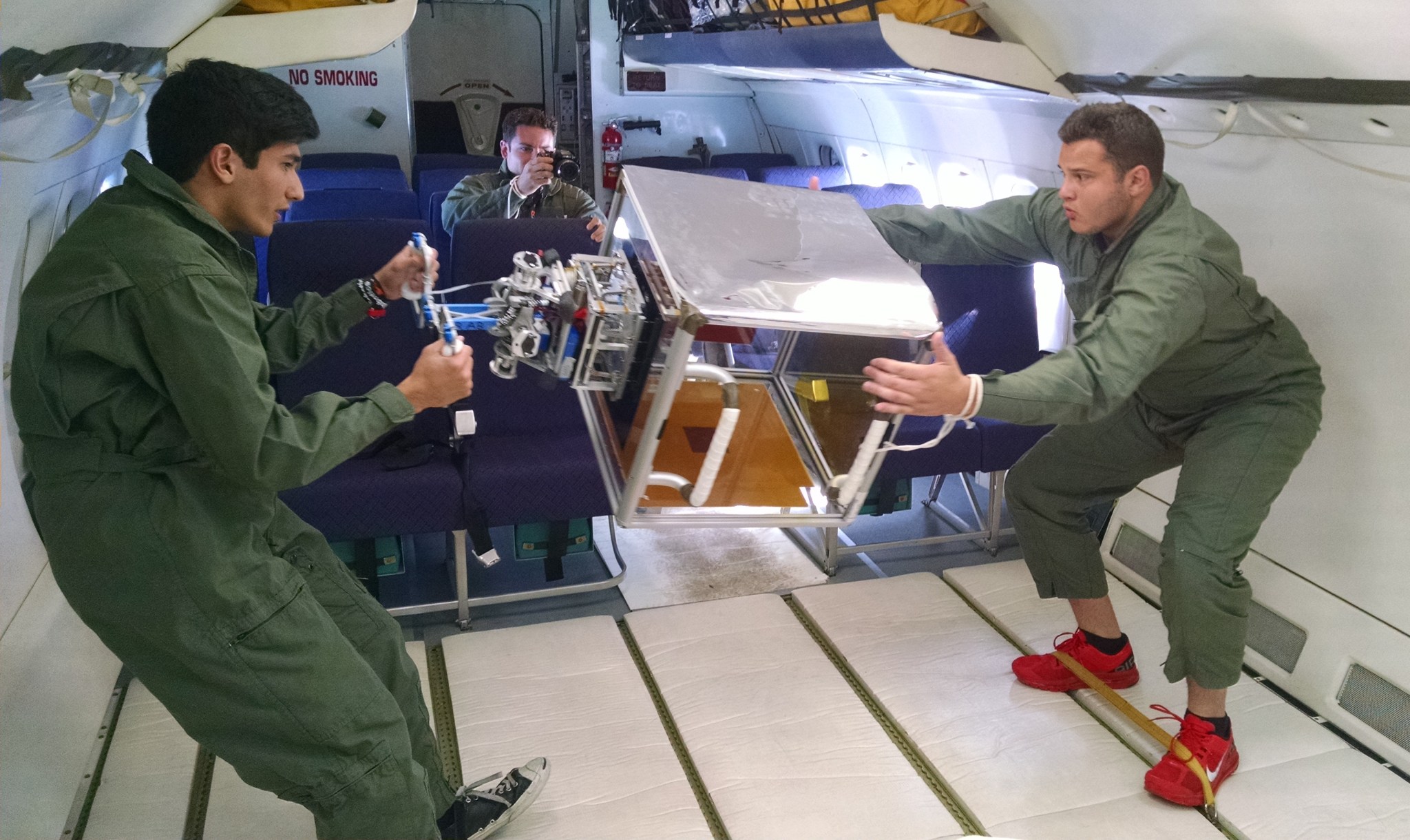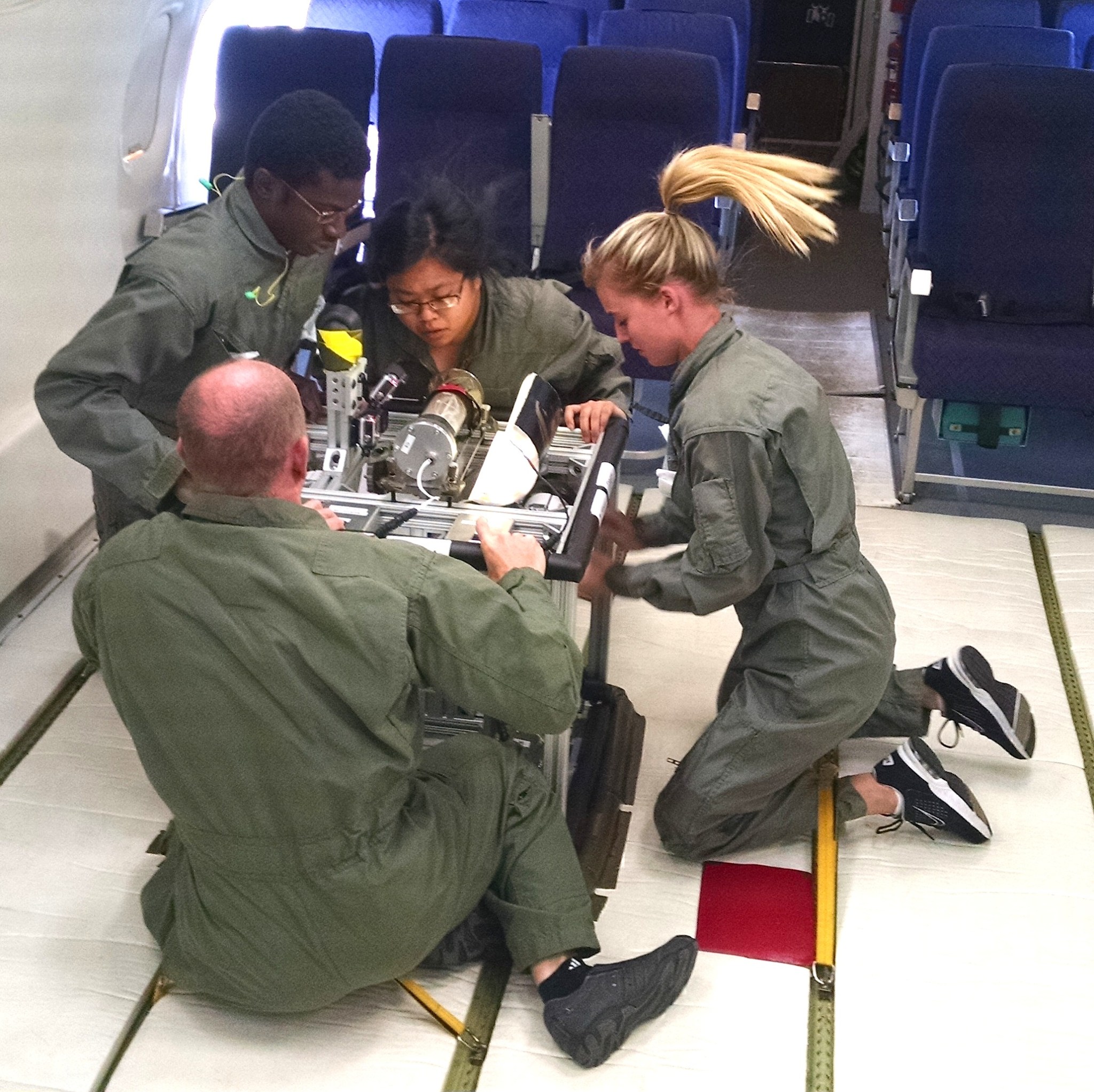NASA’s Flight Opportunities Program funded a series of parabolic flights to evaluate eight space-technology experiments conducted by a like number of teams in late July.
Three universities and NASA’s Glenn Research Center tested their experiments in microgravity onboard NASA’s C-9 reduced gravity airplane during the first flights that began on July 22. Eight flights were conducted over a week-long period out of Ellington Field near NASA’s Johnson Space Center in Houston.
Experiments tested during the parabolic microgravity flights included:
- Johns Hopkins University of Medicine is evaluating a new hand-held, smart device for assessment and rehabilitation of crewmembers on the surfaces of the moon and Mars.
- The University of Central Florida experiment is testing low-velocity collisions between particles that simulate conditions relevant to planetary ring systems.
- The University of Puerto Rico is testing an alkaline fuel cell for water reclamation and energy applications.
- NASA Glenn is assessing an exercise device that maintains strength and endurance for future space travelers.
- A second set of parabolic flights on the agency’s C-9 was then conducted from July 28 through July 30. Selected by through an agency Announcement of Flight Opportunities, three universities and NASA’s Jet Propulsion Laboratory (JPL) tested their experiments during the second round.
- Northwestern University is using the microgravity environment to create superior quality titanium-based, nano-porous metallic foams and explain the difference of those tested in reduced-gravity flight from ground-based samples.
- Carthage College’s experiment is evaluating propellant mass modal resolution data for unsettled fuel states such as microgravity.
- The Massachusetts Institute of Technology tested a docking and undocking system called the Universal Docking Point.
- The JPL team tested a tool for grappling small floating objects.
The Flight Opportunities Program, managed by NASA’s Armstrong Flight Research Center, is part of the Space Technology Program administered by the agency’s Space Technology Mission Directorate. The program provides opportunities for promising space technologies to be demonstrated and validated on a variety of sub-orbital platforms in relevant reduced- and micro-gravity space environments so they may be matured from concept to operational use.



























